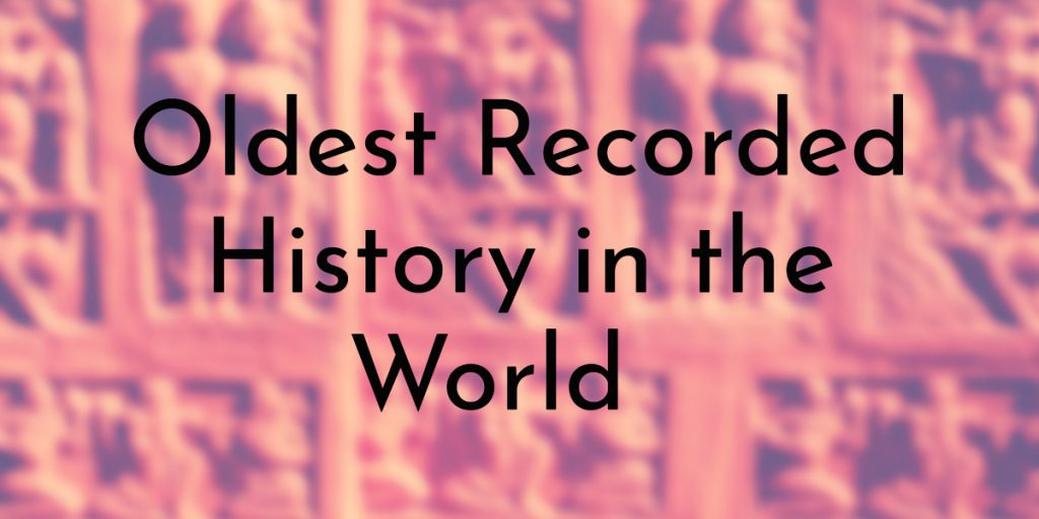The oldest recorded part of history with verifiable information starts around 5000 years ago, circa 3000 BCE, with the emergence of the first writing systems in Mesopotamia and Egypt. This period marks the boundary where history, defined by written records capable of precise communication, begins. Anything older falls outside direct historical record and is accessed only via archaeology or interpreted through religious or mythological narratives.
Writing, in its earliest form, originated as a practical tool for record-keeping rather than storytelling or historical narrative. In Mesopotamia, the earliest known writing developed from transactional accounting of goods, such as tokens representing livestock or commodities. Over time, these pictographic symbols evolved into more abstract cuneiform script, inscribed on clay tablets. This early writing was predominantly economic, serving to manage complex trade and inventory in burgeoning Sumerian cities.
Similarly, ancient Egypt developed early hieroglyphic writing about the same era. The initial stage involved pictorial symbols representing real-world objects. These evolved to incorporate a rebus principle, whereby combinations of symbols represented sounds or abstract ideas unrelated to their initial pictorial meaning. A famous example is the Narmer Palette (ca. 3100 BCE), where hieroglyphs combine to form the name of a king, “Narmer,” illustrating early symbolic literacy.
Some archaeological finds, such as inscriptions referencing King Iry-Hor around 3150 BCE, indicate individuals from this early historical period. Evidence includes the serekh—a rectangular emblem representing kingship—combined with hieroglyphic symbols. Artifacts like the Palermo Stone also provide Egyptian royal annals that extend into prehistory, though not all figures are confirmed historically and may include legendary kings.
Before this advent of writing, human societies left behind physical traces such as monumental architecture, artifacts, and cave paintings. For example, Göbekli Tepe in modern-day Turkey dates back roughly to 10,000 BCE. This site includes massive stone pillars arranged in circles, likely related to early religious or ceremonial functions. However, no writing or direct historical narratives are attached to it.
Similarly, the Lascaux Cave paintings, lying deep within the caves of southwestern France, provide evidence of human artistic expression more than 30,000 years ago. While these vivid, symbolic images offer insights into prehistoric life, they do not constitute written history or deliver specific historical information about events, people, or societies.
The transition from prehistory to history hinges on writing’s capacity to encode language and facts in a reproducible medium. Without writing, cultural transmission relies on oral traditions or symbolic art. These forms carry meaning but lack the precision and permanence of texts. Thus, history proper begins with script; everything before is classified as prehistory or prehistoric archaeology.
| Period | Date | Main Source of Information | Examples | Notes |
|---|---|---|---|---|
| Prehistory | Before ~3000 BCE | Archaeology, Artifacts, Oral Tradition | Göbekli Tepe (~10,000 BCE), Lascaux Cave Paintings (~30,000 BCE) | No writing, interpretive only |
| Earliest Recorded History | ~3000 BCE onward | Written Records | Cuneiform tablets (Sumer), Egyptian Hieroglyphs, Palermo Stone | Business transactions to royal annals |
The oldest recorded history is thus bound to the earliest surviving writing systems, providing data on commerce, kingship, and administrative life. Earlier periods remain accessible only as archaeological or anthropological questions. Without written records, precise historical narratives cannot be recovered. Religious texts or mythologies attempt to fill this gap but do so without independent verification.
Key takeaways:
- History with verifiable information begins around 3000 BCE with writing in Mesopotamia and Egypt.
- Before writing, human information comes from archaeology and art, not precise records.
- Early writing first served business needs before evolving into historical accounts.
- Artifacts like the Narmer Palette and Palermo Stone represent some of the earliest historical records.
- Sites like Göbekli Tepe and Lascaux Cave display ancient human activity but do not provide written history.
- Older information relies on interpretation; unverifiable by direct historical evidence.
Unveiling the Oldest Recorded Part of History: Where Written Records Begin and Archaeology Takes Over

The oldest recorded part of history that we can reliably access starts around 3000 BCE with the emergence of writing systems in Mesopotamia and Egypt. Before this, the tale of humanity is tangled up in archaeology and interpretation, leaving us to guess based on artifacts, not words.
Let’s dive into this fascinating boundary between recorded history and the mysterious prehistory, exploring how writing first emerged and why older information remains mostly beyond our grasp.
Where Does History Begin?
History, in the strict sense, begins with writing. You might say writing is history’s birth certificate. Before writing, humans communicated and recorded things via symbols and images, but these don’t count as history in the technical sense. Why? Because painting on cave walls or making symbols doesn’t transmit clear, precise language-based information.
So, if you’re expecting history to take you back millions of years, you’ll quickly hit the limit: history stops around the late 4th millennium BCE. Past that, we rely on archaeology and science, which provide clues but no written testimony.
The Dawn of Writing: Mesopotamia and Egypt — The Storytellers Start

The oldest known writing systems emerged independently in Mesopotamia and Egypt, roughly 5,000 years ago, around 3000 BCE. They didn’t just pop out fully formed—they evolved from humble beginnings.
Picture this: early Mesopotamian scribes recording sheep counts on clay tokens. One token equals one sheep. Simple, right? Over time, these tokens gave way to pictographs—symbols scratched onto soft clay tablets. The technology advanced: styluses were replaced by wedges, creating what we now call cuneiform script.
Cuneiform quickly grew beyond counting sheep or business transactions. It blossomed into a tool for storytelling, laws, and recording king lists. So, the earliest historical material mostly consists of trade records and administrative data. Hardly the juicy gossip we sometimes want, but crucial nonetheless.
Egypt’s Hieroglyphs: A Visual Poetry of History
Meanwhile, in Egypt, writing took a different form. Inspired by art and pictorial storytelling, Egyptians developed hieroglyphs—symbols standing for things, sounds, or ideas. The transition from pictures of real-world objects to abstract phonetic representations was a game changer.
One fascinating example is the Narmer Palette, an artifact that dates back to around 3150 BCE. The combination of a catfish and a chisel symbol creates the name “Narmer,” a king who likely unified Upper and Lower Egypt. Clever, isn’t it?
Even more intriguing is the recent discovery confirming King Iry-Hor’s existence, his name inscribed with a falcon and mouth hieroglyph, flourishing circa 3150 BCE. This might make Iry-Hor the first person in history whose name we can read outright. Archaeology meets history here to push back the frontier of recorded memory.
When History Meets Its Limit

But what about before writing? That’s where things get tricky. Technologies like cuneiform or hieroglyphs don’t exist. No written documents survive. Instead, we study archaeological findings: tools, bones, and ruins.
Sites like Göbekli Tepe (around 10,000 BCE) show some of the oldest known monumental architecture and hints of early religious practices. Or consider the Lascaux Cave Paintings, created over 30,000 years ago, as evidence of ancient human expression, culture, and possibly beliefs.
However, none of these can be called “history” by itself because they don’t communicate detailed, language-based stories. They raise questions more than they provide answers.
So, Why the Boundary Between History and Prehistory?
Writing anchors history. Without writing, we swim in a sea of guesses. Archaeology offers snapshots, but it can’t spell out the narratives people themselves recorded later on.
This is why historians say the oldest recorded history starts with those first scribbles on clay tablets and hieroglyphic inscriptions—around 3000 BCE. Anything older ends up in the realm of interpretation and myth, often shaped by religious or cultural narratives rather than empirical evidence.
What Does This Mean for the Curious Mind?

If you want stories, names, dates, and events from the very dawn of human civilization, writing is your ticket. Before that, you’re trekking into prehistory—a vast, mysterious landscape dotted with enigmatic art and monumental structures but without a written guidebook.
Understanding this boundary helps us appreciate the profound impact of writing on civilization. Suddenly, people could record laws, history, trade, literature, and royal lineages. We glimpse their lives, ambitions, and ideas rather than guesswork.
To Sum Up
- History begins roughly 5,000 years ago with writing systems in Mesopotamia and Egypt.
- Early writings featured trade records and king lists, evolving into complex literature and documentation.
- Egyptian hieroglyphs introduced phonetic and rebus writing, making abstract ideas recordable.
- Before writing, archaeology and artifacts represent prehistory, rich but unable to tell detailed stories.
- Sites like Göbekli Tepe and Lascaux Cave paint a picture of early human culture but no written narrative.
So next time you wonder how far back history’s voice reaches, remember—it’s the click of a stylus on clay that begins our real conversation with the past. Everything older? That’s prehistory’s whisper, waiting for you to interpret.
What is considered the oldest part of recorded history?
The oldest recorded history starts around 3000 BCE with the first writing systems in Mesopotamia and Egypt. These early writings mostly documented business and later king lists.
Why can’t we get precise historical information from before 3000 BCE?
Before writing, humans used art like cave paintings that don’t transmit exact information. No clear written records exist from before 3000 BCE, limiting knowledge to archaeology and interpretation.
Who is the earliest known historical person confirmed by writing?
King Iry-Hor of Egypt, dated around 3150 BCE, is the earliest confirmed person in history through hieroglyphic inscriptions found at archaeological sites.
How do archaeological sites like Gobekli Tepe relate to recorded history?
Gobekli Tepe is much older, around 10,000 BCE, but it provides no written records. It shows ancient human activity but not precise historical details available through writing.
Are there any reliable historical records from before the invention of writing?
No. Before writing, historical information is not reliably recorded. Any knowledge of those times comes from material remains or religious stories, not from direct records.




